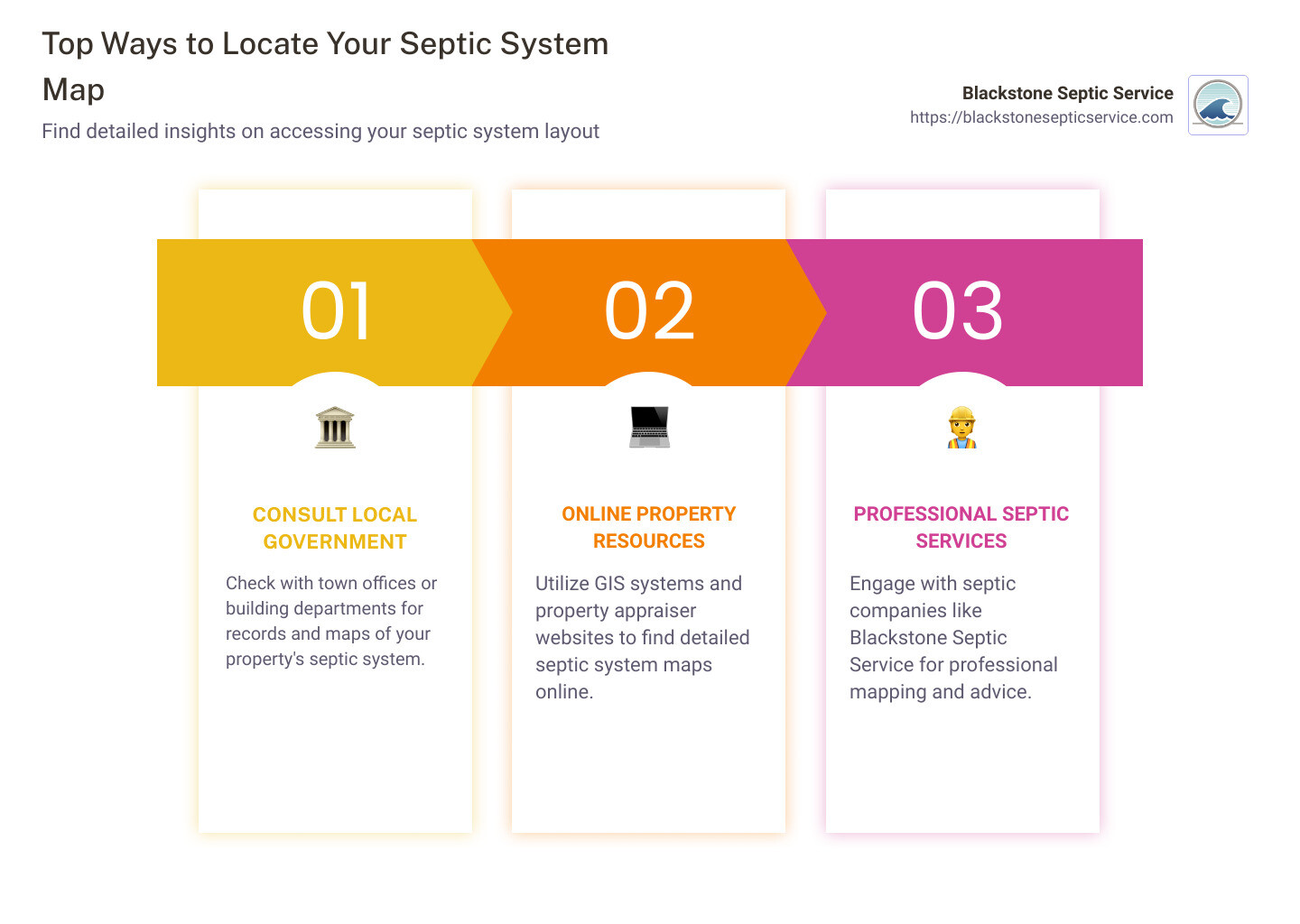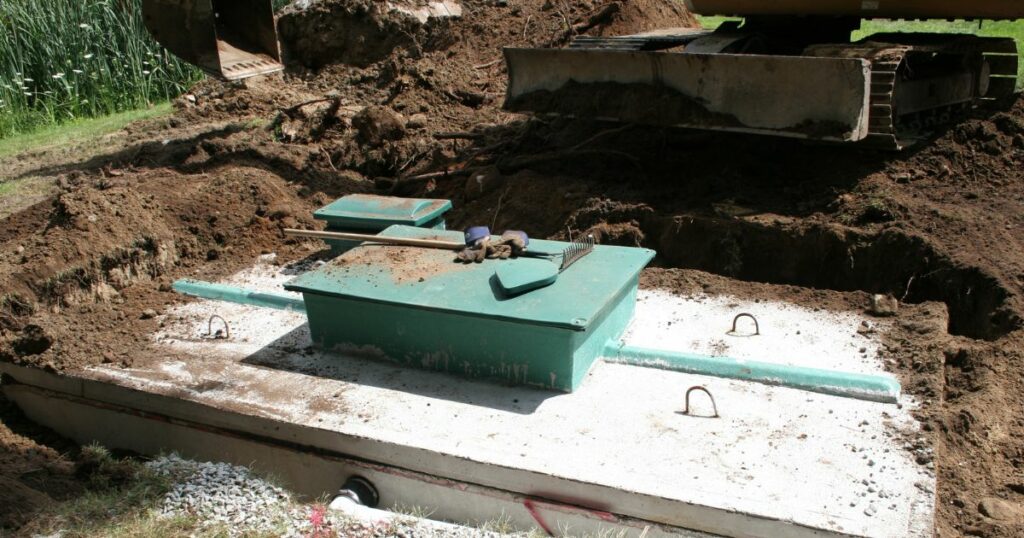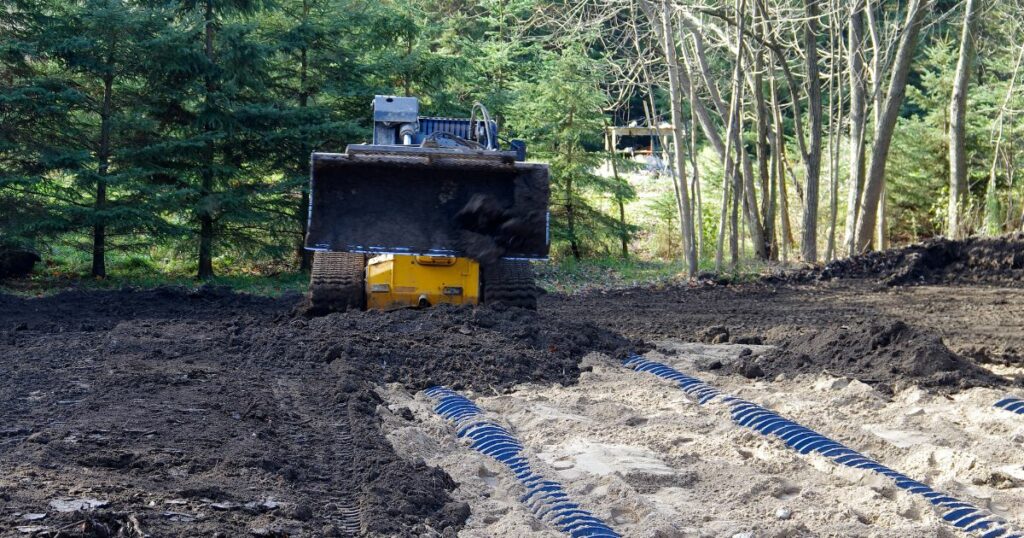Where can I find a map of my septic system? Quickly, here are the key steps: Check with your local building or health department for any records or maps of your property. Alternatively, consult with a septic system service provider who may have access to detailed maps or can help create one for you.
Knowing the exact layout of your septic system can prevent costly repairs, ensure compliance with local regulations, and help plan any home improvement projects that might affect the system. To ensure optimal septic tank maintenance, it’s important to seek professional assistance in locating and maintaining your home’s septic tank. This step is crucial for preventing sewer backups and costly repairs.
Introduction
When you move into a home with a septic system, it’s crucial to understand not only how the system works but also where it’s located. The map of your septic system is a valuable tool for proper maintenance and troubleshooting.
Understanding where your septic system components, such as the tank and the drain field, are located is not just a matter of convenience; it’s a necessity for the longevity and efficiency of your system. With a proper map, you can avoid building over or near the system, which can restrict access needed for pumping, repairs, or emergencies, and you can ensure that the system functions effectively without risk to your property or health.

Table of Contents
Understanding Septic Systems
When we talk about septic systems, understand what they are made of, including the septic tank components such as the lid, how they work, and the different types available. This knowledge not only helps in maintaining them properly but also in making informed decisions about your home and property. Utilizing a metal soil probe can be an effective method to understand the layout and components of the septic system, as it helps in detecting dips, hills, and the septic tank cover, which are crucial for locating the septic tank and its components within the property’s landscape.
Components
A typical septic system has two main components:
- Septic Tank: This is where all the wastewater from your home goes first. Here, the solids settle at the bottom, forming sludge, while the lighter fats, oils, and greases float to the top as scum. The middle layer of liquid exits the tank into the next component.
- Drainfield: Also known as a leach field, this area filters the liquids that come from the septic tank. It distributes the wastewater into the soil, which naturally cleans it before it reaches groundwater.
Function
The primary function of a septic system is to treat and dispose of household wastewater onsite. Here’s how it works step-by-step:
- Wastewater Collection: All water from toilets, sinks, washing machines, and showers drains into the septic tank.
- Separation and Settling: Once in the tank, the waste separates into solids and liquids. The solids decompose with the help of bacteria.
- Effluent Filtration: The liquid layer flows out to the drainfield, where it is further treated by the soil. The soil acts as a natural filter.
- Absorption: Finally, the cleaned water is absorbed by the ground, re-entering the groundwater systems safely.
Types
There are mainly three types of septic systems, each suited to different environmental conditions and usage requirements:
- Conventional System: This is the most common type, which uses gravity to help wastewater flow from the septic tank to a series of trench-like channels in the drainfield.
- Chamber System: Used in areas with high groundwater or shallow soil depths, this system uses a series of connected chambers instead of gravel-filled trenches.
- Aerobic Treatment System (ATS): These systems use oxygen to enhance the decomposition of the waste, producing a cleaner effluent than conventional septic systems. They are effective in areas where traditional systems might not be suitable, such as in poor soil conditions.
Understanding these basics of your septic system is crucial for effective maintenance and troubleshooting. Regular checks and understanding the type of system you have can prevent many common issues associated with septic systems. With this foundation, you can better appreciate the importance of knowing where every component, especially the septic tank and drainfield, is located on your property. This knowledge is vital for everything from daily operations to planning future home improvements.
Why Knowing Your Septic System Map is Crucial

When it comes to managing your home’s septic system, consulting the county health department or local health department for records or maps is more than just a convenience—it’s a necessity. Here’s why understanding the layout of your septic system, with the help of property survey maps and septic tank diagrams from these departments, is essential:
Maintenance
Knowing how to find your septic tank is key to the longevity of your septic system. Locating your septic tank is a crucial first step in scheduling regular maintenance, including inspections and pump-outs. An important preliminary step in this process involves identifying the sewer pipe leaving your house, as it can guide you directly to the septic tank. The Environmental Protection Agency (EPA) recommends that septic tanks be inspected at least every three years and pumped every three to five years. Without a clear map, maintenance can become guesswork, potentially leading to severe and costly system failures.
Landscaping
Planning your garden or any landscaping activity on your property requires knowledge of your septic system’s location. Planting trees or shrubs with deep roots near your septic tank or drainfield can lead to root intrusion and damage. This can cause blockages or even breaches in the system, leading to malfunction or environmental hazards. Knowing where your septic system components are can help you plan your landscaping safely, ensuring that only shallow-rooted plants are placed near sensitive areas.
Legal Compliance
Local regulations often dictate specific requirements regarding septic system maintenance and modifications. For instance, if you plan to add a new structure to your property, local building codes may require proof that the construction won’t interfere with the septic system. Having an accurate septic system map facilitates compliance with these regulations, helping you avoid legal issues and potential fines.
Where can I find a map of my septic system? This question is crucial for any homeowner with a septic system. Typically, you can start by checking with local government offices like the town hall or building department, where records of your property’s septic system may be stored. Online property records or GIS systems may also offer digital maps. Furthermore, professional septic service providers, like Blackstone Septic Service, often have access to detailed records and can assist in identifying the layout of your septic system.
How to Locate Your Septic Tank Map

Public Records and Online Resources
Discovering where can I find a map of my septic system often begins with a trip to your local government offices. County records held by the building department or health department are invaluable in this search. These records typically include detailed diagrams and specifications of your property’s septic system, showing not just the location but also the size and depth of the tank and drainage fields.
Additionally, many counties have moved these records online, making them accessible through GIS systems or property appraiser websites. These digital databases allow you to view and download the necessary maps from the comfort of your home.
Consulting with Professionals
Sometimes, the records you need aren’t readily available or are too outdated to be useful. In such cases, consulting with professionals like Blackstone Septic Service can be extremely helpful. These companies have access to historical data and professional tools to help determine the location and layout of your septic system accurately.
Environmental agencies can also provide guidance and often have records not available in other places. They can offer insights into the regulations and requirements for septic systems in your area, which can influence where and how septic systems are installed.
Using Technological Tools
If traditional methods don’t yield results, or if you need more precise information, technological tools come into play:
- Metal Soil Probes: These are used to physically detect the boundaries and covers of septic tanks by probing the ground. They are simple yet effective tools for pinpointing the exact location of your septic system components.
- Aerial Photography: This method can be particularly useful for identifying the drain field associated with your septic system. Changes in vegetation and soil color can indicate the presence of a septic system, visible from aerial views.
- Ground-penetrating Radar: For the most accurate detection of underground septic systems, ground-penetrating radar can visualize what’s beneath the surface without any digging. This technology can save time and prevent potential damage to your yard.
By leveraging these resources and tools, you can effectively locate your septic system map, ensuring proper maintenance and compliance with local regulations. Next, we’ll delve into the specific steps you can take to maintain your septic system, keeping it running efficiently for years to come.
Where Can I Find a Map of My Septic System?

Finding the map of your septic system is crucial for maintenance, landscaping, and ensuring compliance with local building codes. Here are the best ways to locate this important document:
Check Local Government Offices
Town Office and Building Department: Start by visiting your local town office or building department. These offices often have detailed records of building permits and septic system installations. Ask for any available maps or diagrams that show the location of your septic system. It’s helpful to have your property’s address or tax map number handy when you make this request.
- Tip: Visit during office hours and speak directly with someone who handles property or building records. They can guide you through the available files.
Online Property Records
GIS Systems and Property Appraiser Websites: Many local governments now offer online access to Geographic Information System (GIS) maps. These interactive maps can often show detailed property lines, structures, and sometimes, septic system locations.
- Visit your county or city’s official website and look for links to GIS resources or property records.
- Use the search function to enter your address and navigate to the details of your property.
Property Appraiser Websites: These websites provide a wealth of information about properties, including the location of structures like septic systems. They might not always have the exact map of the septic system, but they can give you a good starting point.
- Example: If you know the general area of your septic system, look for signs on the aerial images that might indicate its location, such as greener grass or a clear area devoid of large trees or structures.
Professional Septic Service Providers
Blackstone Septic Service: When other methods don’t bring the needed results, turning to professionals like Blackstone Septic Service can be your best bet. Not only can they help locate your septic system, but they can also provide detailed maps and advice for future maintenance.
- Blackstone Septic Service uses advanced tools and techniques to determine the exact location of your septic system and can create a detailed map for your records.
- Their expertise ensures that you get accurate information, which is crucial for any repair, maintenance, or compliance needs.
By using these resources, you can find the map of your septic system and keep your home’s wastewater treatment running smoothly. Next, we’ll explore how to maintain your septic system to prevent issues and extend its life.
Maintaining Your Septic System

Maintaining your septic system is key to preventing costly repairs and ensuring it operates efficiently for years. Let’s dive into how often you should inspect your system, common issues to watch for, and tips for DIY maintenance. It’s important to note that septic tank issues should always be left to professionals due to the health risks involved in handling them directly. Most septic tanks require regular maintenance to prevent issues and ensure smooth operation.
Inspection Frequency
Regular inspections are crucial. Experts recommend having your septic system inspected every three years. However, if your system includes mechanical components like pumps, you might need to check it annually. Catching problems early can save you a lot of money down the line.
Common Issues
Several issues can plague septic systems:
- Clogs and backups: These often occur when inappropriate materials are flushed down the toilet. Only human waste and toilet paper should go down your drains.
- Breaks in pipes or the tank: Tree roots, shifting soil, or heavy equipment on the ground above can cause damage.
- Overflows: This can happen if the tank is not pumped regularly. It leads to unpleasant odors and soggy lawns.
DIY Maintenance
While professional help is crucial, there are things you can do yourself to keep your system in good shape:
- Conserve water to reduce the load on your septic system. Fix leaks and use water-efficient fixtures.
- Avoid flushing harmful materials that can clog your system. These include cooking grease, wipes (even those labeled as flushable), and feminine hygiene products.
- Keep the drain field clear. Don’t park cars or build anything over it, and plant only grass near your septic system to avoid root damage.
Regular pumping is also part of maintenance. Generally, you should have your septic tank pumped every 3 to 5 years, but this can vary based on the size of your tank and household usage.
By following these maintenance tips and keeping up with regular inspections, you can help prevent common septic system issues and extend the life of your system.
Conclusion
Maintaining your septic system is not just about keeping it running—it’s about ensuring the health and safety of your home environment. Regular maintenance is crucial. It involves routine inspections and pumping to prevent backups and system failures. A well-maintained septic system can save you a significant amount of money in the long run by avoiding costly repairs.
The importance of professional advice cannot be overstated. While it’s tempting to handle maintenance or repairs on your own, septic systems are complex and require a nuanced understanding of plumbing and environmental regulations. Professionals have the tools, knowledge, and experience to diagnose and resolve issues efficiently and safely.
Contact us today at Blackstone Septic Service, we understand the intricacies of septic systems. Our team of experts is dedicated to providing you with the highest quality service, ensuring that your septic system functions properly and complies with all local health and safety standards. Whether you need routine maintenance, emergency repairs, or advice on managing your system, we are here to help.
Frequently Asked Questions about Septic Systems
When it comes to septic systems, many homeowners have questions about their maintenance and operation. Let’s dive into some of the most common queries:
How do I know if my septic tank is full?
Knowing when your septic tank is full is crucial to prevent backups and system damage. Here are a few signs to watch for:
- Slow drains: If your sinks and toilets are draining slower than usual, it could be a sign that your septic tank is nearing capacity.
- Bad odors: Unpleasant smells around the drain field or tank area can indicate that waste isn’t being properly processed because the tank is full.
- Pooling water: Water pooling around the drain field can be a sign of an overflowing tank.
- High nitrate levels in well water: If you use well water, a sudden increase in nitrate levels can be linked to effluent from a full septic tank seeping into groundwater.
What determines the location of a septic tank?
Several factors influence where a septic tank can be placed:
- Local regulations: Most localities have specific codes that dictate the minimum distance from the house, property lines, and water sources.
- Soil type: The type of soil affects how well it can filter wastewater. Septic tanks are generally placed in areas with more absorbent soil types.
- Topography: The layout of the land also plays a role. Tanks are typically installed downhill from the home to facilitate gravity-fed drainage.
How can I ensure my septic system remains efficient?
Maintaining an efficient septic system doesn’t have to be complicated. Here are some tips:
- Regular inspections and pumping: As mentioned earlier, have your septic tank inspected and pumped by professionals like Blackstone Septic Service every 3 to 5 years.
- Be mindful of what goes down your drains: Avoid flushing anything other than human waste and toilet paper. Keep food scraps, grease, and non-biodegradable items out of your system.
- Conserve water: Reducing your water usage can prevent your septic system from becoming overloaded. Fix leaks and install water-efficient fixtures.
- Keep the drain field clear: Ensure that no vehicles are parked on top of the drain field, and avoid planting trees nearby as roots can damage the sewer pipes.
By understanding these key aspects of septic system maintenance, you can help ensure that your system remains functional and efficient for years to come. If you ever have questions or need assistance, professionals at Blackstone Septic Service are ready to help. Moving forward, let’s explore some additional tips for DIY maintenance and when to call in the experts.
Our Content
Our experienced septic tank specialists have carefully reviewed and edited all of the content to ensure that it meets our high standards for quality and accuracy. At Blackstone Septic Service, our mission is to provide unparalleled expertise and service excellence in the realm of septic system care. With a dedicated team of professionals committed to delivering top-tier solutions, we specialize in comprehensive services encompassing everything from existing system routine maintenance like septic tank pumping and new septic tank system installations.
Blackstone Septic Service is a family-owned company with highly trained technicians, with over 75 years of experience in septic tanks.



